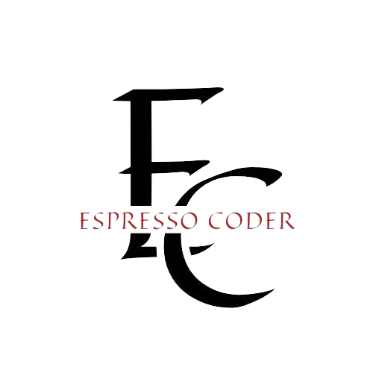Contents
- Quick answer
- What Is Bunkr Fi F Nheqaf2r5zplr?
- Key Facts: Bunkr Fi F Nheqaf2r5zplr
- Why Bunkr Fi F Nheqaf2r5zplr Matters Today
- Decoding the Name: What Does Bunkr Fi F Nheqaf2r5zplr Mean?
- Under the Hood: Likely Technical Features
- Real-World Use Cases in 2025 and Beyond
- Limitations and Ethical Dilemmas
- Technical Foundations (Probable Tech Stack)
- Future of Private Storage: Beyond the Cloud
- Conclusion
- FAQs
Quick answer
Bunkr Fi F Nheqaf2r5zplr is a conceptual, privacy-first digital storage system. It combines encryption, decentralization, and user-only access controls to protect sensitive data from surveillance, hacking, and institutional overreach. It aims to reshape how data is stored and controlled in a post-cloud era.
What Is Bunkr Fi F Nheqaf2r5zplr?
In a world where data breaches and surveillance are everyday concerns, Bunkr Fi F Nheqaf2r5zplr surfaces as a futuristic solution to an age-old problem: how can we truly own and protect our digital information?
At first glance, the name may appear cryptic. But under its layers, it suggests an encrypted, federated framework for ultra-secure data storage—a possible evolution in decentralized digital vaulting.
This article unpacks what this system might represent, how it compares with today’s tools, and why it could be critical for future data privacy.
Hook: If privacy is the new luxury, then Bunkr Fi may be the vault that protects it.
Key Facts: Bunkr Fi F Nheqaf2r5zplr
| Feature | Description |
|---|---|
| System Type | Conceptual encrypted storage framework |
| Security | Zero-knowledge encryption, steganographic obfuscation |
| Decentralization | Likely uses blockchain or post-blockchain protocols |
| User Identity | Pseudonymous, cryptographically secured |
| Use Cases | Journalism, whistleblowing, legal docs, personal archives |
| Key Risk | Irrecoverable if keys are lost; misuse for illegal content possible |
| Future Use | Quantum-resilient, AI-proof, cross-border privacy infrastructure |
| Cost Model | Possibly open-source, non-monetized |
Why Bunkr Fi F Nheqaf2r5zplr Matters Today
Digital Privacy in Decline
Massive data leaks, targeted surveillance, and AI scraping have eroded user trust. Systems like Bunkr Fi F Nheqaf2r5zplr reflect a post-cloud, post-trust philosophy.
Users Want Ownership
More users demand control over their data—not just who sees it, but where it’s stored and if it exists in accessible form at all.
Tech Is Finally Catching Up
Advances in post-quantum cryptography, federated authentication, and distributed file systems now make previously theoretical models—like Bunkr Fi—practically achievable.
Decoding the Name: What Does Bunkr Fi F Nheqaf2r5zplr Mean?
“Bunkr Fi”
Suggests a bunker-like data repository. “Fi” might indicate Framework, Federation, or even Frequency—hinting at adaptive or node-based design.
“F”
Could denote a framework ID or versioning tag within a modular architecture.
“Nheqaf2r5zplr”
Most likely a protocol ID or hash value referencing a particular encryption standard, node cluster, or identity segment.
Under the Hood: Likely Technical Features
1. Zero-Knowledge Infrastructure
- Data encrypted before upload
- Host systems can’t see, access, or decrypt contents
- No passwords stored server-side
2. Decentralized File Distribution
- Uses IPFS, DAG, or similar frameworks
- Data chunks spread across multiple servers
- No single point of failure
3. Pseudonymous Identity Management
- User access granted via cryptographic keys
- No email, phone, or personal info needed
- Sessions time out without data trails
4. Post-Quantum Encryption
- Resistant to future quantum decryption methods
- Lattice-based or hybrid algorithms likely used
5. Obfuscation + Steganography
- Files stored as random binary noise
- Even discovering file presence is near-impossible
Real-World Use Cases in 2025 and Beyond
| Application Domain | Value Delivered |
|---|---|
| Journalism & Activism | Secure source material, cross-border data access |
| Legal & Medical Records | HIPAA/GDPR-compliant long-term storage without centralized oversight |
| Family Archives | Permanent, private records passed through generations |
| Corporate IP Protection | Store patents and trade secrets outside third-party control |
| Blockchain Wallet Keys | Store cryptographic assets without external service dependencies |
Limitations and Ethical Dilemmas
Risks
- Irreversible loss: No way to retrieve data if keys are lost
- Abuse: Could shelter illicit content
- No oversight: No reporting, takedowns, or audits possible
Ethical Questions
- Should such platforms include optional reporting tools?
- Who (if anyone) governs digital sanctuaries?
- Is extreme privacy always socially beneficial?
Technical Foundations (Probable Tech Stack)
- IPFS / Filecoin or DAG-based storage
- NTRU / Kyber or lattice-based encryption
- Biometric Key Stores for mobile access
- Private Blockchain or zk-rollups for audit trails
- Command-line SDKs for dev integrations
Example: A CLI command like
bunkrfi upload --stealth --keys-only-localcould initiate encrypted uploads with no metadata trail.
Future of Private Storage: Beyond the Cloud
Cloud is no longer enough. It’s visible, traceable, and owned by corporations. Bunkr Fi F Nheqaf2r5zplr gestures toward mist computing: highly granular, self-hosted micro-nodes that blur the line between device and cloud.
Expect trends like:
- On-device cryptography at scale
- Biometric gatekeeping for key vaults
- Sovereign data networks controlled by users, not corporations
Conclusion
Bunkr Fi F Nheqaf2r5zplr might not be fully real yet—but it represents where secure tech is heading. In an AI-saturated world, protecting your data from both humans and machines is not just wise—it’s essential.
FAQs
What is Bunkr Fi F Nheqaf2r5zplr used for?
It’s a conceptual privacy tool used to store sensitive data with encryption, obfuscation, and full decentralization.
Is Bunkr Fi F Nheqaf2r5zplr based on blockchain?
Not confirmed, but it likely uses or builds upon blockchain or newer decentralized ledgers.
How secure is Bunkr Fi F Nheqaf2r5zplr?
It aims to be more secure than Google Drive or Dropbox, using quantum-resistant encryption and pseudonymous access.
Can I recover my data if I lose my key?
No. These systems prioritize user sovereignty. Lost keys mean lost access—intentionally.
Is it legal to use?
It depends on local laws. In authoritarian regimes, using strong encryption tools may be restricted.

